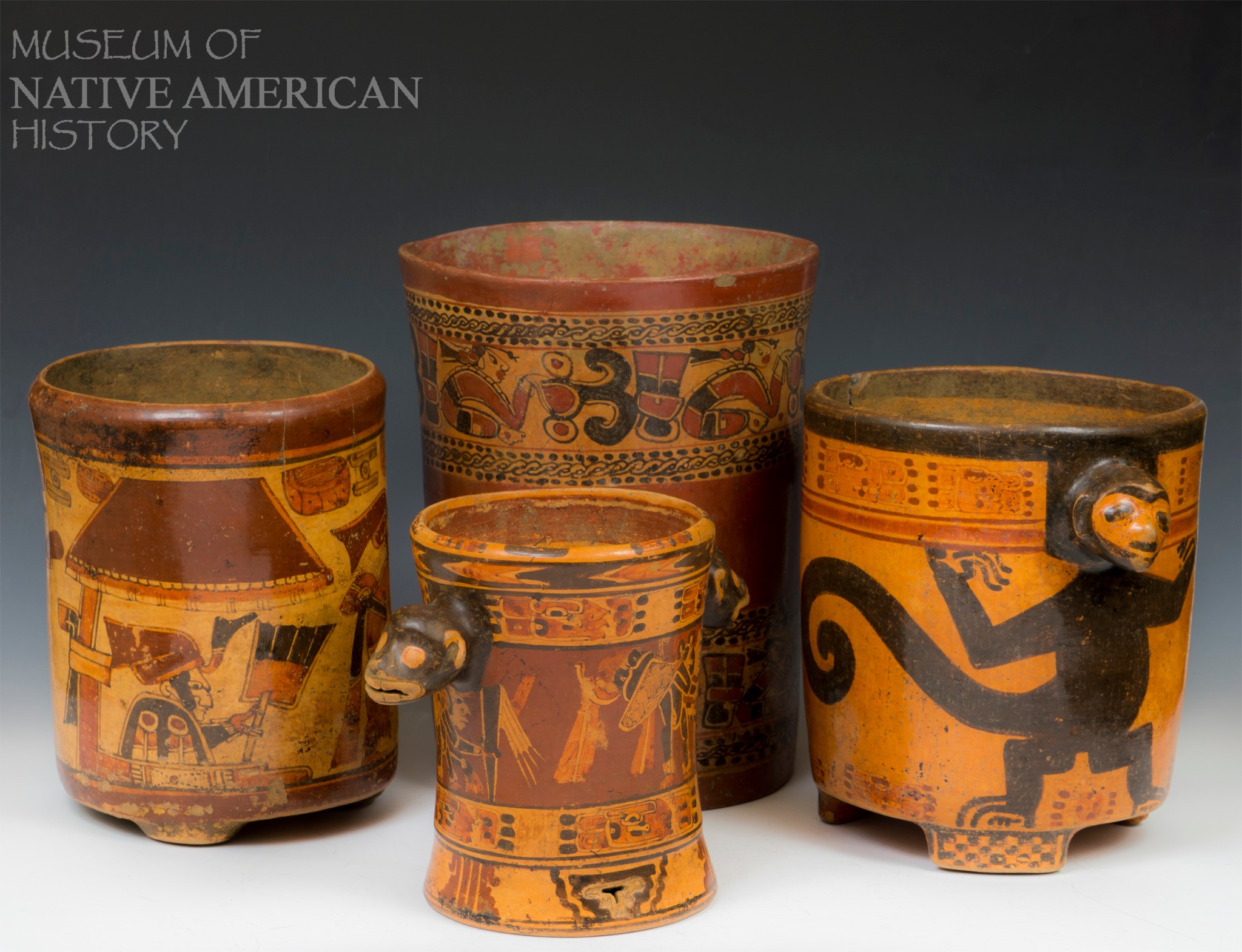Museum Monday is a weekly series where the museum of the month will highlight a different artifact from their collection.

This image depicts four Maya Polychrome Copador vessels ranging in styles and iconography. Vessels like these are important for interpreting Maya society and serve as a visual testimony to their lives. Polychrome painted vessels were once symbols of status and power, many reserved for royalty or elite society. The scenes depicted on these types of vessels often represent the upper levels of society, including religious ceremonies or rituals. Particular titles of the figures are recognizable by their pose and dress. Rulers, for example, are depicted seated, cross-legged on a platform (known as a thrown) and in a large headdress.
We can also capture Maya glyphs often depicted around the rim of the vessel. Maya people began writing around 400 B.C. The Maya language was thought to be lost forever after the Spanish destroyed Maya codices in the 16th century. However, scholars in the 19th century began recording and recovering the language. Scholars understood the language fully in the 20th century. Thus, along with text and images, these vessels can offer a glimpse into the lives and rituals of Maya people. On many vessels, these glyphs represent the name, title and contents of the vase.
While we do not have the exact interpretation of these vessels at MONAH, we can still recognize the excellent artisanship of the people who made these beautiful vessels. They excelled in experimentation with pigments. Because they painted the vases before they were fired, we can still see these vibrant colors today. All of their pottery was also made by hand, without the use of the wheel.
Additional resources regarding Maya artifacts include The Metropolitan Museum of Art and Khan Academy.
ABOUT THE MUSEUM

The Museum of Native American History reopened to the public April 2 after being closed for more than a year. MONAH is now open from 10 a.m. to 4 p.m. Wednesday through Saturday. Visitors must reserve free, timed tickets in advance and follow COVID-19 safety protocols. MONAH is located at 202 SW O Street in Bentonville, Arkansas.

